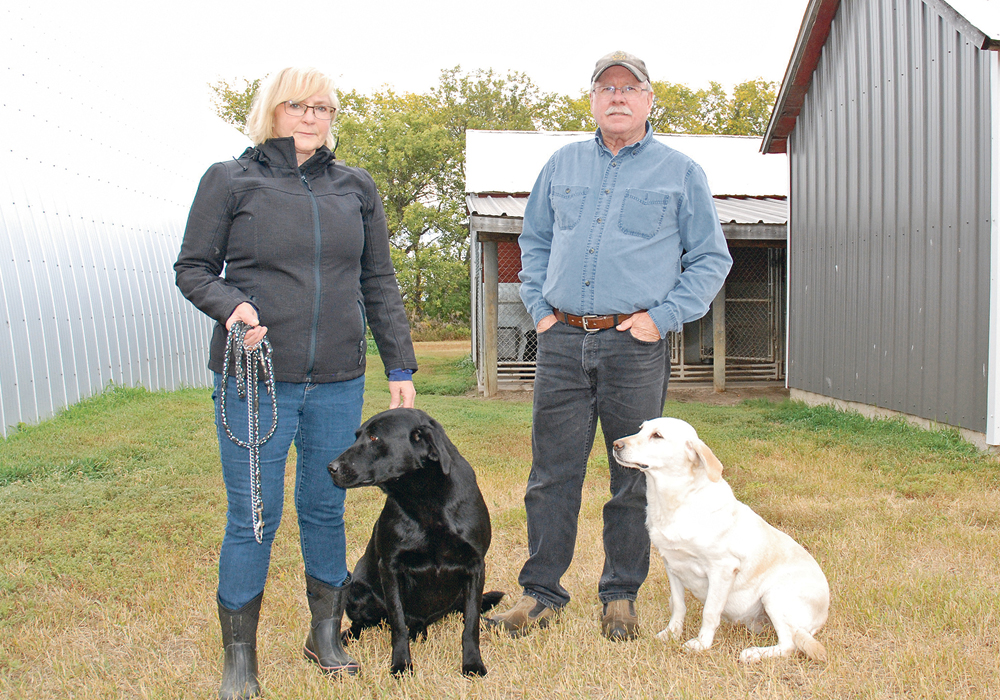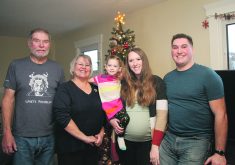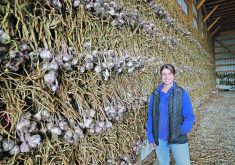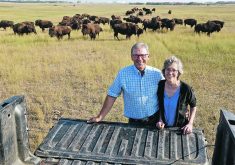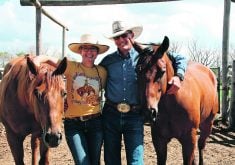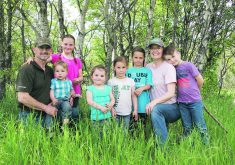On the Farm: Dwaine and Marilyn Haughian release the birds on their property and then host hunters to spend the day
For the birds.
That’s the answer you might get if you ask Dwaine and Marilyn Haughian why hunters love to spend time at Gunworth Kennels and Hunt Farm, a 320-acre grain farm and hunting preserve near Asquith, Sask.
Gunworth Kennels is an upland bird hunting operation that offers commercial hunting excursions to groups or individuals.
Dwaine and Marilyn bought the rural property in the late 1990s and have been hosting hunting enthusiasts for more than 20 years.
The couple raises and sells Chinese ring-necked pheasants, which are set loose in the grassland areas that cover much of the rural property.
Hunters arrive, usually with their own hunting dogs, and spend the day flushing out pheasants and enjoying the thrill of a fresh-air hunt in a picturesque prairie environment.
Pheasants are stealthy birds that instinctively avoid flying. Instead, they stay close to the ground and seek cover in grass or brush when they sense danger.
An experienced hunting dog is usually required to flush the birds out and get them airborne.
Visiting hunters pay a flat fee for every pheasant that’s released by Dwaine and Marilyn, regardless of how many birds are bagged.
This year, the Haughians will raise about 700 pheasants.

The birds are acquired as day-old chicks and are raised to maturity, initially in brooding shacks and later in netted outdoor pens.
Hunting season usually begins the first week of September. Birds are released on the property shortly before the hunters arrive.
“I love hunting,” says Dwaine.
“It’s in my blood and I want other people to share in that enjoyment too.”
Dwaine, formerly a territory manager with Johnson & Johnson (the Band-Aid company) fell in love with hunting at a young age and has always wanted to live in the country.
When the opportunity to acquire a rural property presented itself, he and Marilyn, a self-proclaimed “city girl,” decided to take the plunge.
Read Also

Rural Manitoba resources slim on natural disaster planning
A study from Brandon University’s Rural Development Institute has found that many rural and small municipalities don’t have the staff or resources to make formal climate plans against natural disaster.
Together, they went to work refurbishing the property and setting up brooding shacks, bird pens and kennels for their dogs.
In addition to selling birds, Dwaine and Marilyn also raise and train hunting dogs, teaching them how to flush out and retrieve birds and respond to basic commands.
Hunters who want to shoot a few birds but don’t have their own hunting dog can hire Dwaine and one his dogs.
Without a trained hunting dog, the chances of a successful pheasant hunt are very slim.
“You practically have to walk on them,” before they will fly, says Dwaine.
Cultivated farmland on the couple’s half section is rented out to a local grain farmer.
“When we initially started this operation, we thought it would be something that could support us on its own, but in reality, what it’s really been is a sideline,” Dwaine explains.
“The most we’ve ever raised on this place in a single year was 1,500 birds.”
“We would probably have to sell 3,000 or more (each year) to say this was our sole source of income. But what it enabled us to do is have the lifestyle we’ve always wanted. Between raising Labrador Retriever puppies for sale, training dogs, the bird operation and renting out the cultivated land, we’re able to make it work.”
Dwaine speaks passionately about hunting and the memories it creates between family members and friends.
In 2018, nearly 50 hunting groups visited Gunworth Kennels with visitors ranging in age from less than 10 years old to almost 100.
“I’ve got a guy coming out here tomorrow. He’s 94 years old and we’re going to go hunting pheasants.”
“My biggest sense of satisfaction is when families come out and hunt together.”
For Marilyn, who grew up in Saskatoon, the experience of living on the farm, away from urban amenities, has been a learning experience.
She appreciates the rural lifestyle, and has embraced the opportunity to train dogs and work with them on a regular basis.
Regular visits from her children and grandchildren are also a highlight. The grandchildren love the farm and are always willing to pitch in when chores need to be done.
“I’m not a country girl at heart so it took me a little bit of time to get used to it (the rural lifestyle),” Marilyn said.
“I still love the city, but we have a good life here.”


